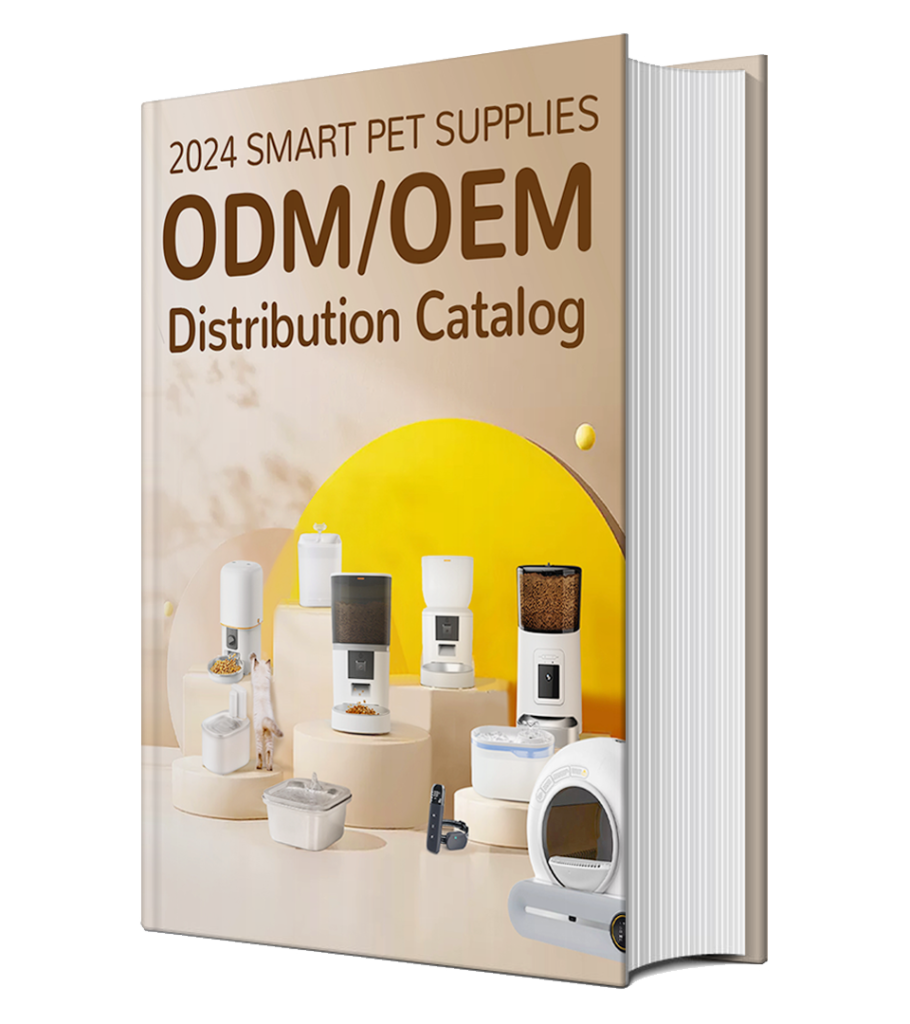Looking for reliable pet product manufacturers in China—but not sure who to trust or how to start? You’re not alone.
As demand for customizable, high-quality pet products continues to soar globally, more and more brand owners, e-commerce sellers, and retail buyers are turning to China for sourcing. The opportunity is huge—but so is the learning curve.
You might be asking:
- How do I tell a trading company from a real factory?
- What’s the difference between OEM & ODM—and which one fits my brand?
- What certifications do I need for the U.S. or EU markets?
- And how can I avoid costly delays, defects, or miscommunication?
This 2025 guide is here to help. We’ll walk you through every critical step—from evaluating pet product manufacturers in China, to choosing the right production model, verifying factory capabilities, reviewing certifications, and building a supplier relationship that truly supports your long-term growth.
Because finding the right pet product manufacturers aren’t just about price—it’s about building trust, consistency, and a shared vision for your brand.
New to the pet product industry? Before diving into sourcing, check out 6 Easy Steps to Start Your Pet Business in 2025 —a beginner-friendly roadmap to help you build a solid foundation before you scale.
Why So Many Brands Choose Pet Product Manufacturers in China
If you’re building or scaling a pet brand, choosing the right manufacturing base can make all the difference. And for thousands of international companies, pet product manufacturers in China remain the preferred choice—and not without reason.
Here’s why smart brand owners keep coming back to Chinese suppliers:
1. Cost-efficiency that protects your margins
With competitive labor, raw material sourcing, and streamlined production systems, China allows you to scale without compromising profitability.
2. Unmatched product variety under one roof
Whether you’re looking for automatic pet feeders, smart water fountains, interactive toys, or even eco-friendly accessories—you’ll find everything you need (and more) in one ecosystem.
3. Mature, export-ready supply chains
Decades of OEM/ODM experience mean faster lead times, lower MOQs, and suppliers who already understand international quality standards and documentation.
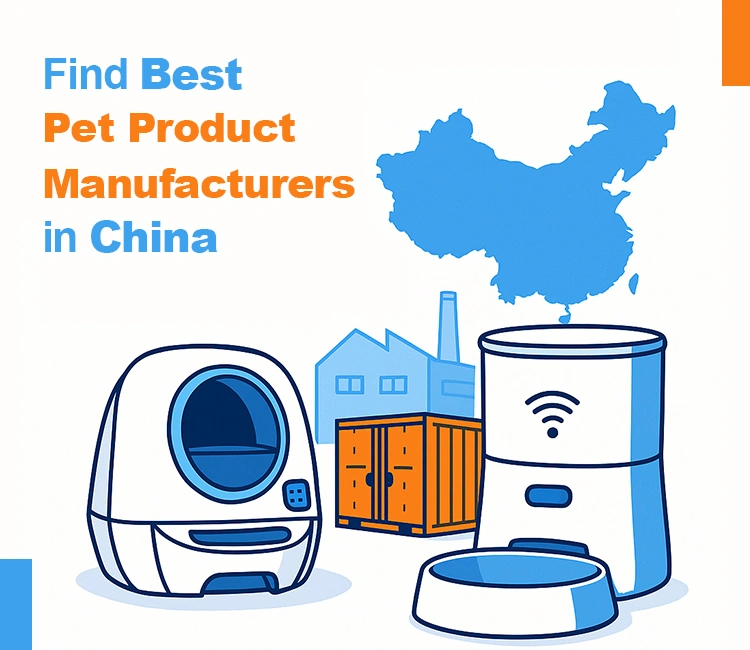
4. Innovation built into the process
China’s pet tech scene is evolving fast. From app-connected devices to IoT-enabled features, smart functionality is no longer a “premium”—it’s becoming the new standard.
5. Growing domestic and export markets
According to the USDA Foreign Agricultural Service, China’s pet food market hit $41.9 billion in 2024, with U.S. exports alone reaching $296.6 million. This surge fuels demand for high-quality accessories and tech-enhanced products—offering more growth potential for global suppliers and buyers alike.
Curious about what’s trending now? Don’t miss The 8 Ultimate Smart Pet Products of 2025—a curated look at the most in-demand innovations this year.
Need help choosing a trusted partner? Check out our vetted Top 10 Best Pet Product Manufacturers in China to find suppliers who align with your goals.
Sourcing from China isn’t just about cost—it’s about finding the right partner to help bring your product vision to life, with the quality and consistency your brand deserves.
Where to Find Pet Product Manufacturers in China
When you’re exploring sourcing options for your pet brand, knowing where to look is half the battle. Different regions in China have their own areas of manufacturing expertise—and choosing the right hub can save you time, cost, and unnecessary back-and-forth.
Here’s a quick overview of the key manufacturing zones, based on product types:
1. Guangdong (Shenzhen, Dongguan)
Best for: Smart pet products like automatic feeders, self-cleaning litter boxes, and WiFi-enabled devices
This region is at the heart of China’s electronics and IoT supply chain. If your product involves sensors, motors, or app connectivity, chances are your best suppliers will be here.
To explore top-performing suppliers in this segment, you can refer to our detailed guide on the top self-cleaning litter box manufacturers in China.
2. Zhejiang (Ningbo, Yiwu)
Best for: Pet toys, grooming tools, collars, leashes, and pet clothing
Zhejiang is known for its versatility and speed, especially for seasonal, trend-driven, or colorful SKUs. Factories here often handle mixed-material products and are flexible with MOQ.
3. Jiangsu & Shandong
Best for: Pet beds, feeding bowls, wooden crates, and home-style pet furniture
If your brand focuses on aesthetics, comfort, or natural materials, these regions are where craftsmanship meets scalability. Many suppliers here offer eco-friendly and export-ready solutions.
Want to meet manufacturers face-to-face? Events like the CES, Global Pet Expo, Tokyo Big Sight Inter Pets, Canton Fair, Global Sources Hong Kong Show, ZOOMARK INTERNATIONAL, Latin American Electronics Mexico, Eletrolarshow feature many of these regional suppliers. Attending can give you a first-hand look at product quality—and help you build trust faster.
Sourcing smart feeders? Make sure to check out our How to Choose a Reliable Automatic Pet Feeder Factory in China (2025 Guide). It breaks down what to look for, what to avoid, and how to verify capabilities before you commit.
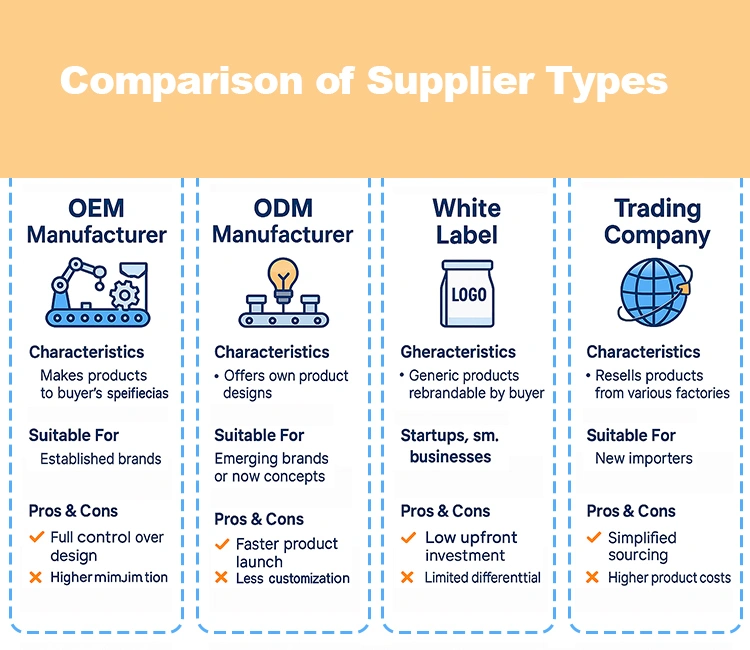
Types of Pet Product Manufacturers You’ll Encounter
When sourcing in China, not all “manufacturers” are created equal. Knowing who you’re really working with can save you from miscommunication, quality headaches, and unexpected costs down the road.
Here’s a breakdown of the most common types of suppliers you’ll come across—and what each means for your business:
- OEM (Original Equipment Manufacturer) – You bring the concept or design; they help you engineer and produce it from the ground up. Great for established brands with R&D capabilities and a clear product vision.
- ODM (Original Design Manufacturer) – You select from ready-made designs and tweak colors, functions, or packaging. Perfect for launching quickly with moderate customization and lower startup costs.
- White Label Supplier – Off-the-shelf products, rebranded with your logo and packaging. Ideal for eCommerce sellers or retailers testing a new product category.
- Trading Company – Middlemen who source from multiple factories but don’t directly control production. Can be useful for beginners—but quality, pricing, and timelines may be harder to manage.
OEM vs ODM: Which Pet Product Manufacturer Model Fits Your Business?
Choosing between OEM and ODM isn’t just about product development—it’s about aligning with your budget, timeline, and long-term vision.
Go OEM if…
You’re building a differentiated brand and have a unique product idea. You’re willing to invest in tooling, mold development, and longer lead times in exchange for a truly “yours” product.
Choose ODM if…
You want to move fast, reduce risk, and test market interest before developing from scratch. ODM gives you a head start without reinventing the wheel.
Still deciding? Take a closer look at our full article: Pet Product OEM vs ODM Explained: Which Model Fits Your Business?
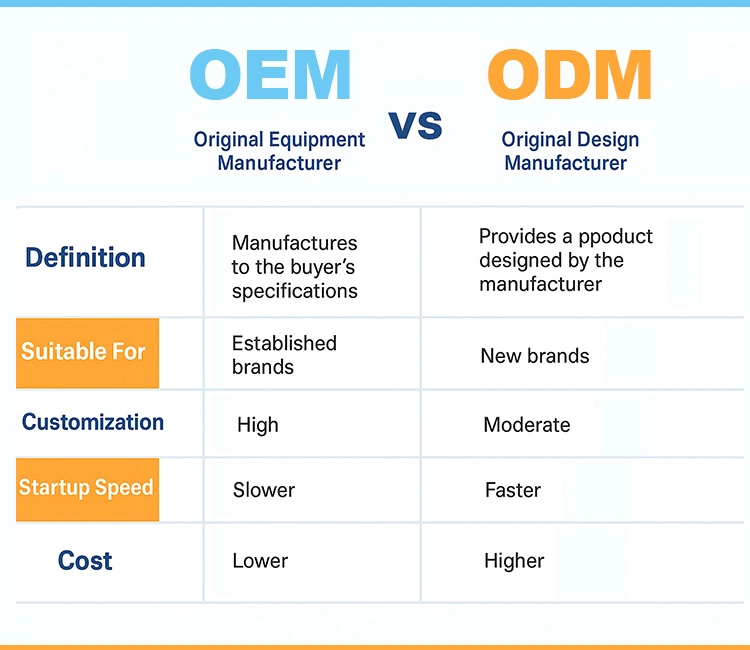
Red Flags to Watch Out for When Vetting Pet Product Suppliers
Not every supplier will meet your standards—and that’s okay. The key is knowing what to look out for:
- Unwillingness to share a valid business license or factory certifications
- Promises that sound too good to be true—like ultra-fast delivery without proof
- Vague or evasive communication around samples, pricing, or contract terms
- No transparency on production process or inspection policies
If something feels off—it probably is. Always ask questions, request documentation, and test with smaller orders before going all in.
How to Choose the Right Pet Product Manufacturer in China: A 6-Step Framework
Finding the right manufacturing partner in China can feel overwhelming—especially when you’re balancing deadlines, budgets, and brand standards. But with the right process in place, you can move from uncertainty to clarity—and build a foundation for long-term success.
Here’s a six-step sourcing framework we’ve seen work for pet brands at every stage:
1. Clarify What You Actually Need
Before you start browsing supplier platforms, ask yourself:
- Do I need a fully custom product—or can I private label an existing design?
- What’s my budget per unit (including packaging, shipping, duties)?
- Who am I targeting—premium retail, Amazon, wholesale?
The clearer your goals, the faster you’ll filter the right manufacturers.
2. Use Trusted Search Channels
Start with platforms that vet suppliers, like:
- Alibaba Gold Suppliers
- Global Sources verified listings
- Pet trade shows (e.g., Global Pet Expo, Interzoo)
- Word-of-mouth referrals from trusted peers
Not every supplier is created equal—so choose your search pool carefully.
3. Pre-Screen Candidates Before You Commit
Look beyond pricing. Request catalogs, read company profiles, and check:
- Do they show real factory photos (not just polished product shots)?
- How detailed are their product specs and response times?
- What do reviews (or past customer feedback) say about communication?
Trust starts with transparency.
4. Audit the Factory—Even If You Can’t Be There
A quick video call inside a factory can reveal more than a 10-page brochure. If you can’t fly in, request:
- A third-party audit (we recommend SGS or TÜV)
- A live walkthrough via Zoom or WeChat
- Clear footage of production lines, QC processes, and warehouse setup
Need a checklist? Here’s our Pet Product Factory Audit Checklist (2025)—practical and easy to use.
5. Always Request Samples
Don’t rely on promises—rely on prototypes. A real sample helps you assess:
- Material quality and finishing
- Packaging structure
- Product noise level, firmware, and usability (especially for smart items)
Ask for a QC report from a recent production batch too—it shows what standards they hold.
6. Start Small with a Trial Order
Once you’ve shortlisted a supplier, validate how they perform in real conditions. Start with a smaller batch and observe:
- How well they follow your instructions
- How they handle feedback and revisions
- Whether the QC matches the sample—and stays consistent
It’s better to scale after trust is earned.
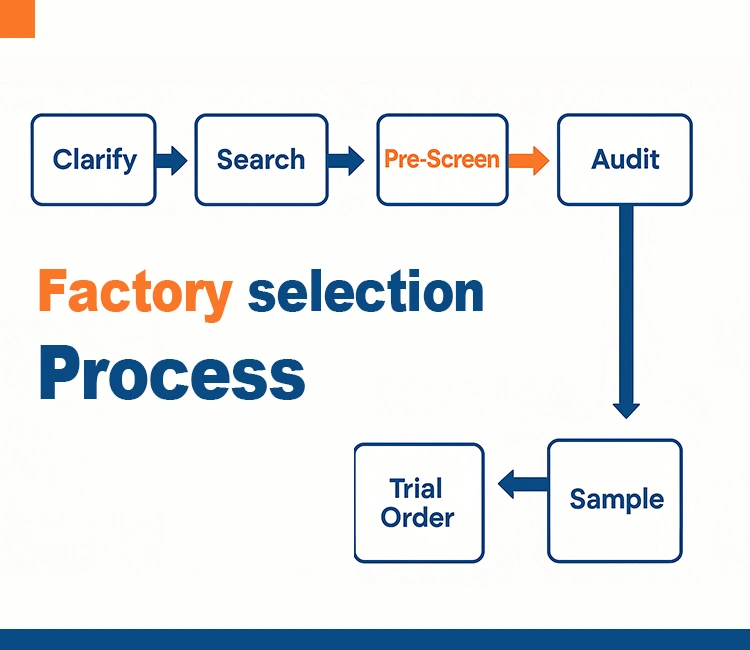
What Makes a Good Pet Product Manufacturer?
You’re not just buying products—you’re building a relationship. Here’s what reliable partners consistently demonstrate:
- Clear and timely communication
- Realistic timelines—and accountability if delays happen
- Willingness to sign NDAs and protect your designs/IP
- Openness about pricing, MOQs, and processes
If a supplier feels too secretive or evasive early on, that’s usually a red flag.
How to Compare Pet Product Manufacturers Objectively
When you’ve got a few candidates, use a scorecard approach to stay objective:
| Criteria | Why It Matters |
| Product Range | Can they grow with your line? Or just supply one SKU? |
| Customization Ability | Do they support OEM/ODM? How flexible are they? |
| Lead Time | Can they meet your launch windows consistently? |
| Communication Quality | Do they understand your requests clearly and promptly? |
| Certifications Held | CE, FCC, RoHS, FDA—required for market entry and platform listing. |
Choosing the right pet product manufacturer takes time, but it’s worth every hour you invest. A good partner will not only help you deliver great products—they’ll help your brand grow, evolve, and earn customer trust.
How Pet Product Manufacturers in China Produce Your Products Step by Step
Whether you’re placing your first OEM order or scaling production for an established brand, understanding how pet product manufacturers in China bring your ideas to life can help you plan better, avoid surprises, and build trust in the process.
Here’s a step-by-step look at what typically happens behind the scenes:
1. Product Design or Sample Confirmation
If you’re working with an existing product, this step involves confirming specs, color options, and sample approval. If it’s a custom design, your factory may help refine functionality, structure, or even suggest improvements for manufacturability.
2. Tooling and Mold Development (for OEM Projects)
For fully customized parts—especially for plastic housing or internal structures—the factory creates tooling and molds. This phase may take 10–20 days, depending on complexity, and is a one-time investment for long-term production.
3. Material Sourcing & Injection Molding
Once everything’s locked in, raw materials are ordered, and plastic parts are molded. For smart products, this also includes sourcing electronic components like sensors, chips, or pumps.
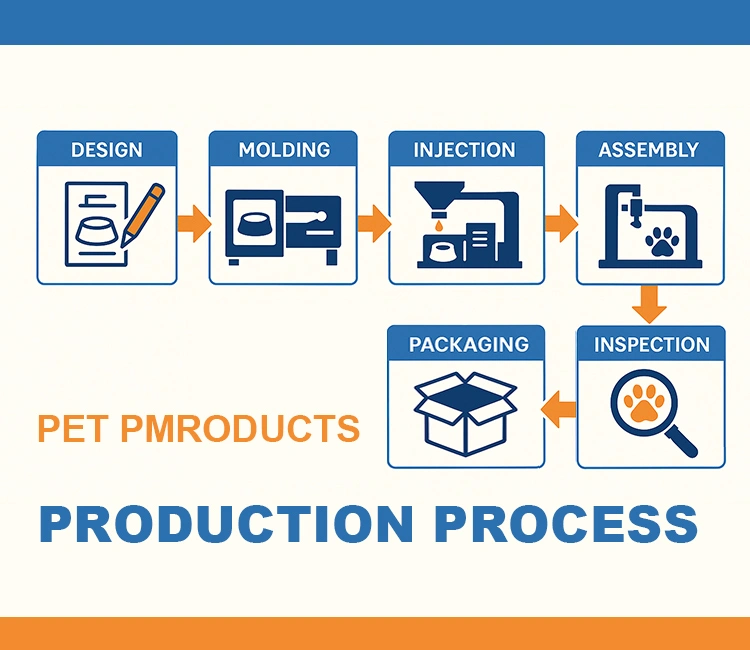
4. Assembly, Wiring & Firmware Integration (if applicable)
Technicians begin assembling the units, integrating wiring and electronic components. For smart feeders or fountains, firmware is uploaded and tested at this stage to ensure core features like Wi-Fi, sensors, or app connectivity work as intended.
5. In-House Quality Inspection
Before packaging, the factory runs a full quality control check—looking at appearance, function, and stability. If you work with a third-party QC team, they usually inspect at this point too.
6. Packaging & Labeling
Once the products pass QC, they’re labeled with your branding, user manuals, barcodes, and any required compliance marks (like CE, FCC, or RoHS). Packaging is often pre-approved to align with your brand’s retail or shipping standards.
Typical lead time: Most orders take 25–45 days from sample confirmation to completion—excluding mold development time, if applicable.
Curious to see how it all looks in action? Take a closer look at How Pet Products Are Manufactured in China: A Step-by-Step Process Explained for real-world insights into factory workflows, timelines, and team roles.
Understanding the Cost Structure from Pet Product Manufacturers
If you’re importing pet products from China—whether it’s smart automatic pet feeders, wifi-enabled pet water fountains, or smart cat litter boxes—it’s important to understand where your money is actually going.
For an in-depth look at how to source and customize these devices, you can browse our guide to the top automatic pet feeder manufacturers in China, which covers OEM options, cost factors, and private label strategies.
A factory quote isn’t just a number. It reflects a series of cost layers that directly impact your pricing, margins, and market competitiveness.
Here’s a closer look at what typically makes up your unit price when working with pet product manufacturers:
Core Cost Breakdown
- Raw materials – The type and grade of plastics, electronics, or food-safe materials used
- Tooling & Molds (for OEM projects) – Initial setup costs for creating custom designs
- Labor & Assembly – Varies depending on complexity, automation, and production volume
- Certifications & Compliance – Costs to meet standards like FDA, CE, FCC, RoHS, etc.
- Packaging – Both functional protection and branded unboxing experience
- Logistics – Whether you choose FOB (factory to port) or DDP (factory to your warehouse)
Hidden Costs You Should Clarify Upfront
Sometimes, it’s not the headline price that eats into your profit—it’s the fine print. Before signing off on a deal, be sure to ask about:
- Sample shipping fees – Especially for international express; some factories offer partial refunds if you proceed with bulk orders
- Custom packaging surcharges – Custom prints, embossing, or retail-ready boxes may add cost
- Third-party testing fees – CE, FDA, FCC, REACH, and more—required for many regulated markets
Asking the right questions early can save you thousands later.
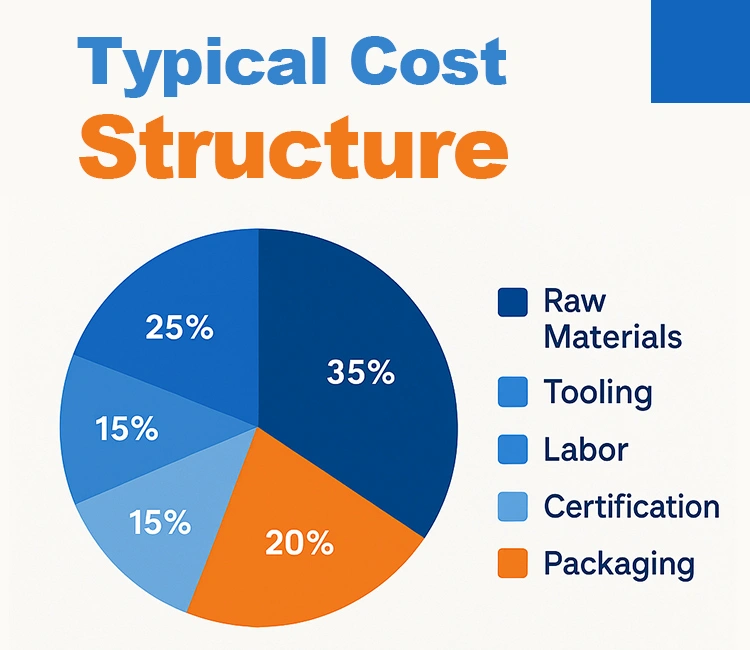
How to Reduce Costs Without Sacrificing Product Quality
We understand you’re not just chasing the lowest price—you’re building a sustainable brand. Here are a few strategies that smart buyers use to optimize costs without cutting corners:
- Negotiate based on volume and long-term intent – Most manufacturers are happy to offer better rates if they see future potential
- Simplify packaging, strategically – You can cut costs while still delivering a great branded experience
- Leverage the factory’s existing molds and structures – Especially helpful for semi-OEM projects or fast market entry
A good manufacturer won’t just quote a price—they’ll help you find the best value for your business model.
Need help evaluating a quote or planning your next product line? We’re here to support you with transparency, experience, and partnership.
Pet Product Manufacturer Certifications You Should Never Overlook
When you’re sourcing pet products—especially from overseas—certifications aren’t just a formality. They’re your safety net for customs clearance, marketplace approval, and most importantly, your customers’ trust.
Whether you’re importing to the EU, US, or selling globally, here are the key certifications you’ll want your manufacturer to provide:
- CE & RoHS – Required for most pet electronics sold in the European Union. These confirm product safety and environmental compliance.
- FCC – Mandatory for smart products with WiFi, Bluetooth, or radio frequency components in the United States.
- FDA – Required for any food-contact materials, like food bowls, automatic feeders, or treat dispensers.
- ISO9001 – While not legally required, this certification speaks to the factory’s internal quality management system—and can make a big difference in consistency and reliability.
Why this matters: Missing or invalid certifications can result in customs delays, product seizures, or account suspensions on platforms like Amazon. And if you’re building a long-term brand, you know how much is riding on product quality and compliance.
Want to go deeper? Check out this detailed certification checklist from JJR Testing Laboratory for specific testing methods and documentation examples.
If you’re sourcing hydration-related smart devices, learn more about top automatic cat water fountain manufacturers in China—covering OEM customization, sensor technology, and global compliance standards.
Or explore our full guide: Pet Product Certifications Explained (CE, FCC, FDA & More)—a must-read before placing your next order.
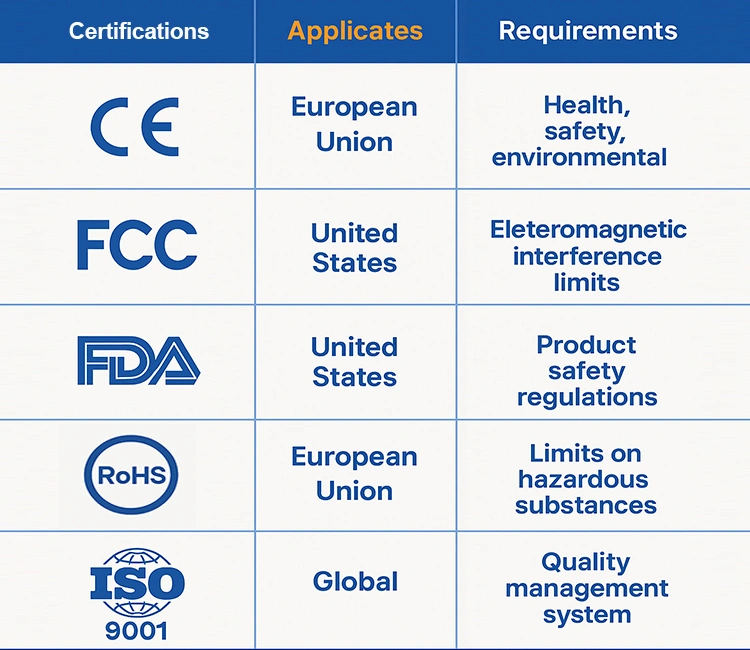
How to Audit Pet Product Manufacturers in China (Remotely or On-Site)
When you’re trusting a supplier with your brand, you want to be sure they can actually deliver—not just samples, but consistent quality at scale. Whether you’re visiting in person or conducting a remote audit, doing your homework upfront helps you avoid surprises later.
Here’s a practical factory audit checklist to guide your evaluation:
- Business credentials – Ask for a valid business license and export license. It confirms they’re legally allowed to produce and export.
- Production capacity – What’s their monthly output? Are they equipped to scale with you?
- Key machinery and product flow – A quick walk-through or factory layout can reveal whether they’re set up for efficiency—or outsourcing everything.
- QC records & return logs – A transparent factory should be able to show how they track defects, handle complaints, and continuously improve.
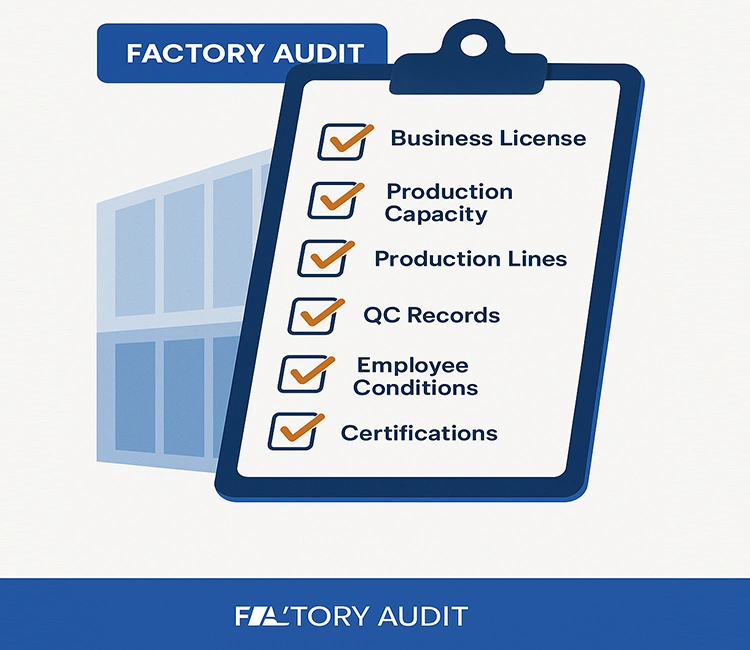
Auditing Remotely? These Tools Help You Verify Without Leaving Your Desk
- Alibaba’s Verified Supplier & Video Tour tools – Good for early-stage supplier browsing.
- Live Zoom factory walkthrough – Many serious manufacturers, including us at Petrust®, offer live calls so you can see the real production floor.
- Independent third-party audits – Companies like SGS, TÜV Rheinland, and Intertek offer professional inspection and certification services.
Looking for Proof of Safety & Performance?
If your market demands higher standards (like the EU or premium retail channels), keep an eye out for additional third-party certifications, such as:
- TÜV SÜD’s Pet-fit Certification – Focuses on mechanical safety and real-use testing.
- RoHS / REACH / CE / FCC – Region-specific compliance markers that protect you during customs checks and platform listing reviews.
Want a broader look at where pet innovation is heading? Read Smart Pet Supplies: The Ultimate Guide to Innovative Pet Care Solutions to explore the trends shaping the next generation of pet products.
How to Request and Evaluate Pet Product Samples Like a Pro
Requesting a sample isn’t just a formality—it’s your first real look at what your customers will experience. And when you’re investing in a product that carries your brand, every detail matters.
Here’s how experienced buyers handle pet product samples to reduce risks and make smarter decisions:
1. Request more than one unit (if possible)
Having at least three samples gives you flexibility:
- One for lab or third-party compliance testing
- One for internal function and user experience testing
- One for product photography or early marketing materials
2. Test for what your customers will notice—before they do
Don’t just check if it turns on. Test for:
- Noise level and motor consistency
- Smart features or app responsiveness
- Safety (sharp edges, overheating, food-grade materials)
- Ease of use (for both pets and humans!)
3. Give clear, constructive feedback—and don’t be afraid to request changes
This is the time to align expectations.
Point out what you like, what needs improvement, and what doesn’t fit your brand experience. A good supplier will welcome this feedback and offer a revised version that gets you closer to launch-ready.
Want a structured checklist to guide your sample review process? Check out our practical guide: How to Request and Evaluate Pet Product Samples from China (Like a Pro)
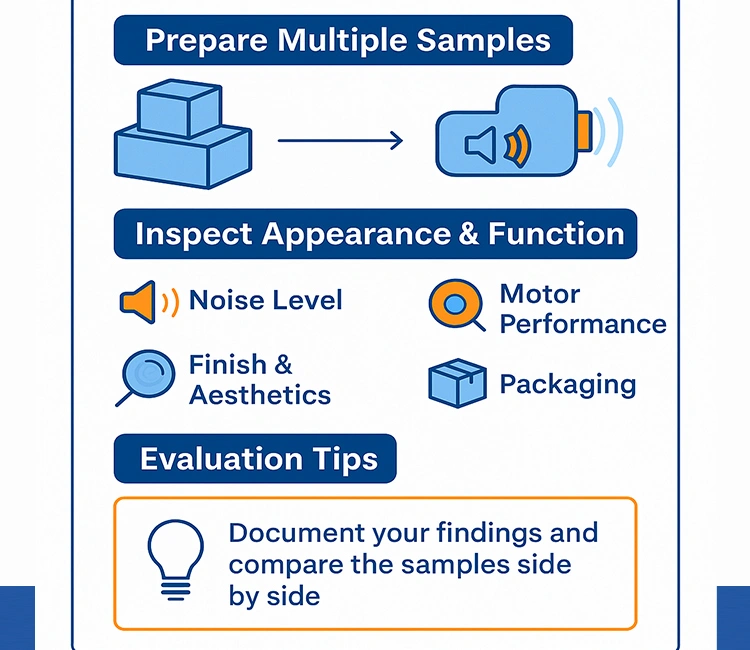
How to Negotiate with Pet Product Manufacturers in China
If you’re working with pet product manufacturers in China, negotiation isn’t just about getting a better price—it’s about setting up a partnership that supports your long-term growth.
Whether you’re placing your first test order or scaling a best-selling SKU, knowing what to negotiate—and when—is key to building trust, securing better terms, and avoiding costly misunderstandings.
What You Can (and Should) Negotiate:
- MOQ: Ask if there’s flexibility, especially for new SKUs or trial runs.
- Unit Price: Discuss based on order volume, customization level, and payment structure.
- Payment Terms: Try negotiating 30/70 (deposit/balance), especially after building trust.
- Lead Time: Clarify both production and shipping timelines—and factor in holidays.
- Branding Extras: Don’t forget to ask about including your logo, user manual, color box, or even QR-coded inserts as part of the package.
When to Negotiate—and When to Hold Back:
- Best Time: After your sample is confirmed and you have clear specs, quantities, and target timelines in place. This shows professionalism and helps the supplier quote more accurately.
- Avoid: Peak holiday seasons (like Chinese New Year), or trying to negotiate aggressively without clear information—they may perceive this as high-risk and disengage.
Think Beyond Just “This Order”
If your goal is long-term success, treat negotiations as the start of a relationship—not just a transaction.
- Be upfront about your growth plans, future SKUs, or potential reorder volumes.
- Once you build a rhythm with a manufacturer, explore options like exclusive designs, custom molds, or territorial agreements—especially if you’re placing consistent orders.
A supplier who understands your vision is far more likely to support you with flexibility, faster service, and product improvements down the line.
Want to go deeper? Check out How to Negotiate with Chinese Pet Product Manufacturers for Better Pricing & Terms for scripts, case studies, and supplier psychology insights.
Pet Product Manufacturers in China vs Other Regions: A Comparison
When choosing where to manufacture your pet products, cost isn’t the only thing on the line. You’re also balancing production speed, quality, innovation, and how flexible the supplier is when it comes to customization.
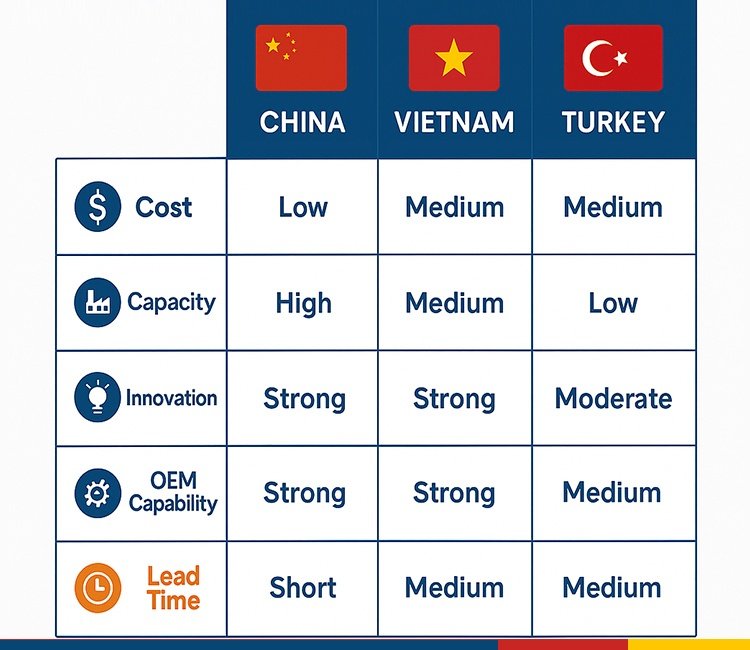
Here’s a practical side-by-side look at how pet product manufacturers in China compare with other common sourcing regions like Vietnam and Turkey:
| Criteria | China | Vietnam | Turkey |
| Cost | Competitive | Slightly lower | Medium |
| Capacity | High | Medium | Low |
| Innovation | High | Low | Low |
| OEM/ODM Ready | Strong & mature | Limited | Rare |
| Lead Time (Standard) | 30–45 days | 40–60 days | 60–75 days |
While Vietnam and Turkey may appeal to brands looking for niche production or shorter shipping routes to Europe, China continues to lead when it comes to scalable manufacturing, innovation, and reliable OEM/ODM support—especially for smart pet products like feeders, water fountains, and litter boxes.
If you’re planning to customize your product, build a private-label line, or scale quickly for retail or online distribution, working with pet product manufacturers in China often provides the strongest infrastructure and flexibility to grow with you.
Mistakes to Avoid When Working with Pet Product Manufacturers in China
When you’re eager to launch or scale your pet product line, it’s tempting to move fast and cut corners—but even small missteps early on can lead to major headaches later. Here are a few common traps that new and even experienced buyers fall into—and how to avoid them:
1. Choosing a supplier based solely on the lowest quote
It’s natural to be budget-conscious, especially if you’re a startup or testing a new product. But the lowest price often comes at a cost—whether it’s subpar materials, inconsistent quality, or poor communication. A slightly higher quote from a more professional, transparent manufacturer may save you much more in the long run.
2. Skipping the sample evaluation process
Photos, spec sheets, and promises can’t replace a hands-on review. Sampling isn’t just about checking if the product “works”—it’s about assessing real quality, finish, functionality, noise level (for smart items), and even packaging. One well-examined sample can prevent thousands of dollars in product returns.
3. Assuming all factories have valid certifications
Not all suppliers are created equal. Some may say they meet CE, FCC, FDA, or RoHS standards—but without valid, up-to-date testing reports, those claims are risky. If you’re selling in the US, EU, or other regulated markets, certifications aren’t optional—they’re mandatory for customs clearance, online platform listing, and legal protection.
4. Overlooking compliance and regulatory checks
Quality isn’t just what you can see—it’s also what you can prove. If you skip compliance planning early on, you might face customs delays, unexpected fines, or takedowns from online marketplaces. Always verify your manufacturer’s understanding of your target market’s legal and safety requirements.
Pro Tip: A trustworthy manufacturer will be happy to walk you through their certifications, testing protocols, and QC processes. If they resist or dodge your questions—that’s your cue to walk away.
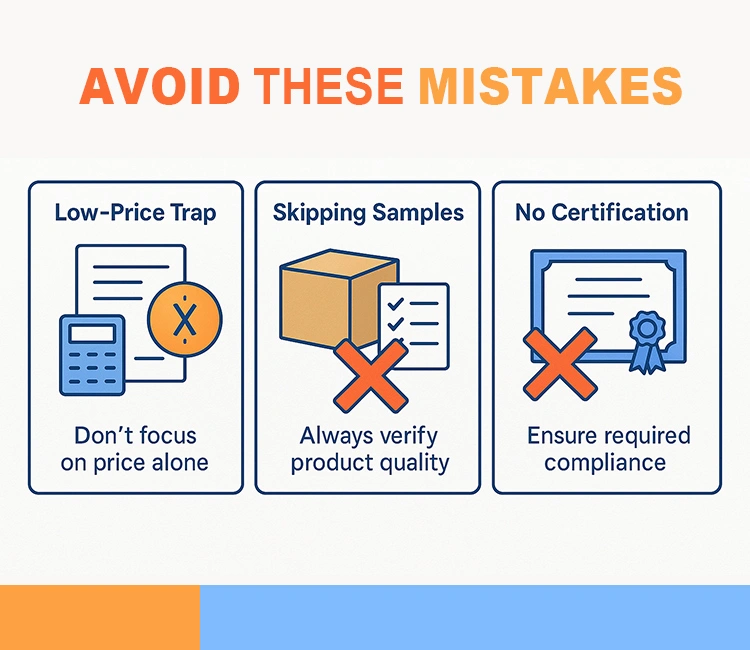
FAQ: Working with Pet Product Manufacturers in China
1. What’s the typical MOQ when working with pet product manufacturers in China?
Most factories set MOQs between 300–1,000 units, depending on the product category and level of customization.
If you’re just getting started, some manufacturers (like Petrust®) may offer lower trial MOQs to help you test the market before scaling up.
2. Can I visit or audit the factory before placing a bulk order?
Yes—and it’s highly recommended. Many manufacturers now offer live video factory tours, especially for overseas clients. You can also arrange third-party inspections or audits to verify quality control systems, production capacity, and certifications before committing.
3. Do Chinese manufacturers support full brand customization?
Absolutely. Most experienced pet product manufacturers offer a wide range of OEM services, including:
- Logo printing (on product, packaging, or both)
- Custom packaging design
- Localized instruction manuals
- Custom color or material selection
- And even feature tweaks (depending on MOQ and model)
4.What’s the difference between OEM and ODM in pet product sourcing?
- OEM means the product is made entirely to your design—you own the concept and specs.
- ODM refers to a pre-developed product offered by the supplier, which you can brand or modify slightly (e.g. color, logo, function).
OEM gives you more control and exclusivity; ODM is faster and lower-cost to launch. Your choice depends on your timeline, budget, and brand strategy.
5. How do I protect my brand and IP when sourcing from China?
Protecting your idea and brand is critical. Here’s how:
- Sign an NDA (Non-Disclosure Agreement) before sharing sensitive designs or business plans
- Register your trademark in your target market(s) and—if applicable—in China
- Choose reputable manufacturers with a strong compliance and IP protection record
- Consider working with legal counsel or sourcing agencies for added protection
If you still have specific questions about finding the right partner, how to negotiate terms, or how to structure a sample order—we’re always here to help.
Need personalized sourcing support? Talk to a Petrust® OEM/ODM expert today.
Ready to Start Sourcing from Trusted Pet Product Manufacturers?
Whether you’re taking your very first step into importing pet products or preparing to scale an established brand, one thing is clear—the manufacturer you choose will shape your product, your timeline, and your customer experience.
That’s why at Petrust®, we’re here not just to produce—but to partner. We understand the pressure of getting things right, especially when your name is on the box. And we’re committed to giving you the tools, transparency, and flexibility you need to grow with confidence.
Here’s how you can get started today:
- Get a Custom Quote Within 24 Hours – Tell us what you need, and we’ll show you what’s possible.
- Request a Hands-On Sample Kit – See, touch, and test the quality before you commit.
- Book a Live Video Factory Tour – Walk through our production floor, wherever you are in the world.
- Explore Our OEM/ODM Services – Learn how we help brands like yours launch with speed and scale—with your name, your design, and your standards.
Building a reliable pet product line doesn’t have to be overwhelming. You just need a partner who cares as much as you do.
We’d love to be that partner.







